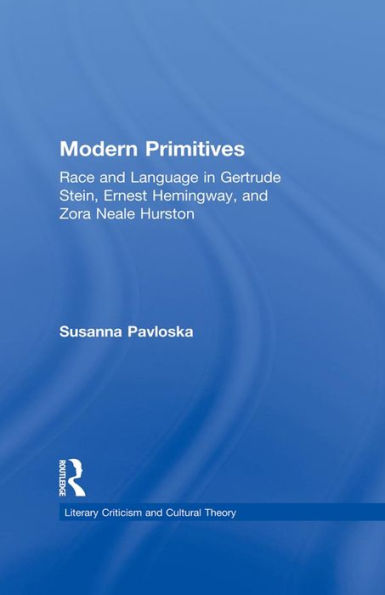This book explores the ways in which the American writers Gertrude Stein, Ernest Hemingway, and Zora Neale Hurston used modernist primitivism to assert a uniquely American literary identity in the face of European cultural hegemony.
The extended Introduction traces the history of primitivism from a classical rhetorical trope to its emergence in the twentieth century as aesthetic, exemplified by Picasso and his use of African masks, that combined new work in the human sciences especially anthropology and psychology, with new ideas in the visual arts to challenge traditional ideas of realism and artistic accomplishment. The first two chapters bring together visual evidence, published and unpublished writings, and linguistic theory to give the first detailed account of the theoretical and gender concerns of the Stein-Picasso collaboration, which culminated in Picasso's Les demoiselles d'Avignon and Stein's Melanctha.
In the final two chapters, the author shows how both Hemingway and Hurston participated in the racialist scientific debates of the 1920s and used primitivism to find their respective artistic voices: Hemingway in his use of American Indians in recasting his life narratives in the Nick Adams stories, and Hurston in her attempts to use her anthropological training to construct a mythic African-American past.
This book explores the ways in which the American writers Gertrude Stein, Ernest Hemingway, and Zora Neale Hurston used modernist primitivism to assert a uniquely American literary identity in the face of European cultural hegemony.
The extended Introduction traces the history of primitivism from a classical rhetorical trope to its emergence in the twentieth century as aesthetic, exemplified by Picasso and his use of African masks, that combined new work in the human sciences especially anthropology and psychology, with new ideas in the visual arts to challenge traditional ideas of realism and artistic accomplishment. The first two chapters bring together visual evidence, published and unpublished writings, and linguistic theory to give the first detailed account of the theoretical and gender concerns of the Stein-Picasso collaboration, which culminated in Picasso's Les demoiselles d'Avignon and Stein's Melanctha.
In the final two chapters, the author shows how both Hemingway and Hurston participated in the racialist scientific debates of the 1920s and used primitivism to find their respective artistic voices: Hemingway in his use of American Indians in recasting his life narratives in the Nick Adams stories, and Hurston in her attempts to use her anthropological training to construct a mythic African-American past.

Modern Primitives: Race and Language in Gertrude Stein, Ernest Hemingway, and Zora Neale Hurston
154
Modern Primitives: Race and Language in Gertrude Stein, Ernest Hemingway, and Zora Neale Hurston
154eBook
Related collections and offers

Product Details
| ISBN-13: | 9781135705534 |
|---|---|
| Publisher: | Taylor & Francis |
| Publication date: | 01/14/2014 |
| Series: | Literary Criticism and Cultural Theory |
| Sold by: | Barnes & Noble |
| Format: | eBook |
| Pages: | 154 |
| File size: | 778 KB |
